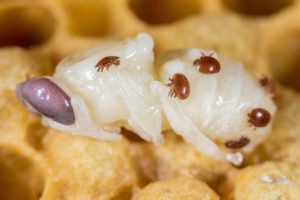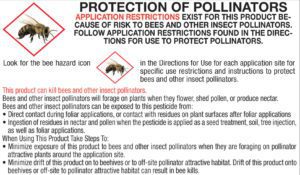HONEY BEES’ FUTURE NOT LOOKING SO GOOD
By Chris Williams on July 19, 2019.
For years now, we’ve been worried about the nation’s hard-working and very important honey bees. The average person doesn’t realize the agricultural value of honey bees. We know that’s where honey comes from, sure, but have no idea how many commercial crops rely on pollination by honey bees to produce fruit, nuts (almonds especially), or vegetables. Here’s a mind-boggling statistic: Commercially-raised honey bees pollinate $15 billion worth of U.S. food crops each year. They’re little agricultural dynamos!
Also for years now, entomologists and bee experts have been trying to figure out why honey bees are failing to thrive and are abandoning apparently healthy colonies at an alarming rate. The syndrome was dubbed Colony Collapse Disorder or CCD (see In the News – Honey Bee Colony Collapse Disorder). Disease was blamed, pesticides were blamed, a parasitic mite was blamed, and overall stress, when bees are trucked from orchard to orchard, was blamed.
IT ALL STARTS WITH A TINY PARASITIC MITE

Varroa mites feeding on Honey Bee larvae. Shutterstock
Although we still don’t have a definitive answer, at least not one that everyone accepts, it looks like what’s bothering honey bees is all of the above. Parasitic Varroa mites are the catalyst that triggers the reaction that is killing off commercial bee colonies. The tiny mites attach to bees and their larvae and suck out their tissues. The attack weakens the bees and their tolerance to pesticides and disease. And if that isn’t enough, the mites also spread viruses to the honey bees.
BEE COLONY LOSSES HIGHEST IN 13 YEARS
Beekeepers have been struggling to keep their colonies healthy and thriving, especially through the winter. Management techniques such as the use of essential oils to keep the mites away help some. The University of Maryland just released the latest results of a nationwide study that found that U.S. beekeepers lost 38% of their bee colonies last winter, the highest loss seen in 13 years of research.
INSECTICIDES DON’T RECOGNIZE BEES AS THE GOOD GUYS
Insecticides are designed and sold to kill insects and most products are not discriminating, they will kill any insect that comes in contact with the material. At Colonial Pest, we’ve always tried to protect honey bees when using insecticides outdoors, especially when spraying near flowering plants that bees may be visiting. Now it’s more important then ever.

Pollinator protection label insert found in Insecticide Label from the EPA
The Environmental Protection Agency has recently taken steps to add even stricter bee protection statements to pesticide labels. One pesticide group, the neonicotinoids, has been singled out as a particular problem for struggling bees and many states, plant growers, and plant nurseries are banning the use of neonicotinoid products on plants for sale.
PROTECT BEES IN YOUR GARDEN – YOU NEED THEM!
It’s even more important that the millions of home gardeners understand how to protect pollinating insects. Honey bees aren’t our only pollinators either. Other bees such as bumble bees, carpenter bees, other solitary bees, and even wasps and some insects that are not bees visit flowers and aid in pollination.
Most importantly, avoid spraying insecticide on or near flowering plants. Don’t use insecticide dusts on flowering plants either since particles stick to bees’ body hairs. You can often use other types of applications such as granules watered into the soil to treat pests on plants, or spray at dusk when bees are not active. Be aware of insecticide drift, too, when treating plants. Airborne sprays or dusts can be carried by wind to affect bees on a plant some distance away. Always read the insecticide label; it may have special instructions for protecting pollinators and our honey bees need all the help they can get.
Here’s how to do your part: Protect Honey Bees When You Use Insecticides Outdoors